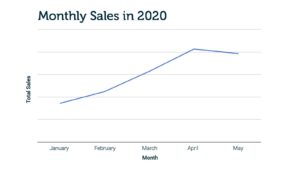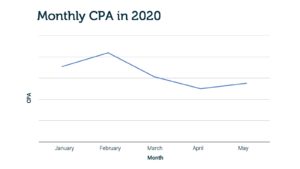
Leveraging the Use of Programmatic in Healthcare and Pharma
Programmatic advertising has seen a remarkable surge in the past few years and is anticipated to account for 89% of all spend in digital advertising in the US by 2021. On the other hand, the healthcare and pharmaceutical industries have been lagging behind in overall digital advertising. These industries make up only 2.8% of total digital advertising spend in the US in 2019 and this figure is projected to remain the same in 2020.
The main factor for this lack of investment in advertising technology is stricter regulations surrounding data privacy and personal consumer information in the healthcare sector. Medical publishers contain large quantities of first-party data, as their audiences are often opt-in consumers with self-declared health interests. Healthcare privacy regulations, however, largely prohibit healthcare and pharmaceutical companies from using first-party data which links individuals with their medical conditions. This places greater restrictions on retargeting campaigns that rely on first-party data, especially in regards to sensitive medical conditions. Instead, most healthcare advertising is done through television where it can offer products and services to consumers in a more generic way.
Why should the healthcare sector invest in programmatic?
Does that mean there is little opportunity for programmatic advertising in the healthcare and pharmaceutical industries? When done correctly in compliance with existing data regulations to protect consumer privacy, programmatic can be an extremely powerful advertising tool.
Programmatic enables brands to target specific audiences, and therefore provides consumers with more personalized communications that convey relevant information to meet their needs. Two-thirds of healthcare consumers are more likely to engage content that is relevant and informative. It also is a cost-effective strategy, as brands can target a far larger audience and in real-time compared to traditional or other digital methods of advertising. Finally, programmatics can be measured more precisely, so that brands can assess what campaigns are the most effective and optimize their campaign performance.
In the COVID-19 era, programmatic may be increasingly seen as a viable strategy for the healthcare and pharmaceutical industries. Between January and April this year, we have seen a 42% increase in healthcare advertising spend, the largest increase in spending compared to other verticals according to the IAB Europe Economics Trends Forum.

Our data
Looking into the data from our healthcare and pharmaceutical clients at MainAd, we have also found that there is a trend in increasing programmatic spend during the COVID-19 pandemic. Our clients saw an 128% increase in products sold from January to May of this year.

Our data also shows that campaigns that ran during this time have recorded better overall performance, with a 22% decrease in CPA since the start of the year.
How brands can use programmatic advertising safely?
To navigate through the healthcare sector programatically, here are some key considerations to keep in mind:
It is key to adhere to any applicable regulations surrounding data privacy and healthcare. It is thus very important to never use personally identifiable information or personal health information that can link an individual to their health condition.
A way to work with these strict regulations is to run broader targeting, such as geo or demographic targeting, that do not target an individual specifically with their known medical conditions. Using neutral messaging within the content of the advert serves to avoid sounding like it knows the consumer’s medical history. Targeting healthcare professionals (HCP marketing) also helps to avoid privacy violations as the audience would be targeted based on the line of work, rather than on personal health information.
Additionally, putting a focus toward informing rather than selling works to appeal towards a broader audience. When health advertising offers more information, three out of four individuals are more likely to engage with the campaign. Providing a more informative campaign can also make the advert more relevant to the consumer, thereby zoning in on a key strength of programmatic advertising.
The heavy regulations on data privacy in the healthcare sector present a unique challenge to the use of programmatic. However, following best practices to protect consumer privacy, there are still plenty of opportunities here for healthcare and pharmaceutical companies to wield programmatic media to better communicate with their audiences.
